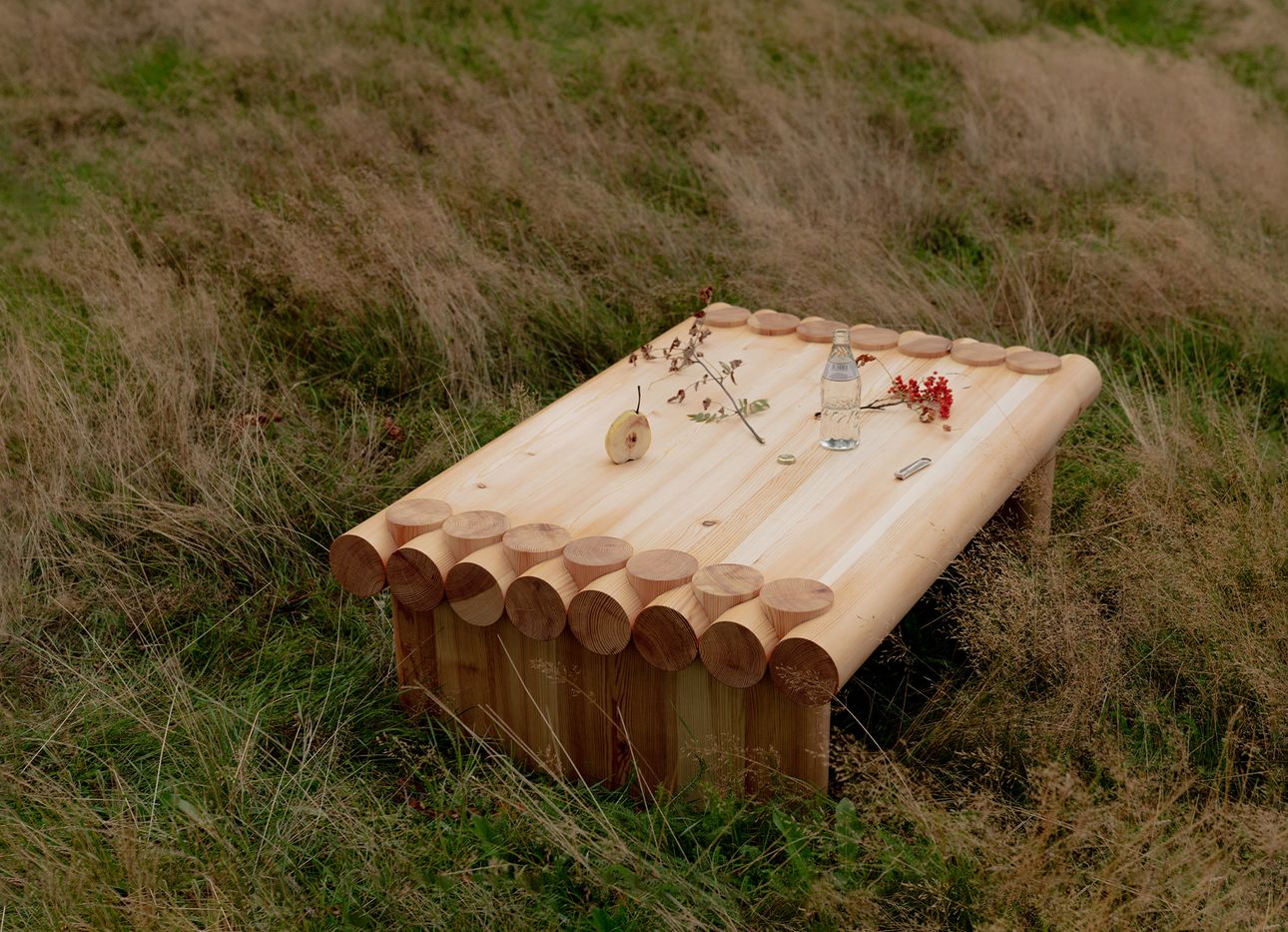
How a Finnish Furniture Company Explores the Potential of Pine
Despite being among the most abundant tree species in Finland, pine has been largely overlooked and underutilized as a furniture-making material by recent generations, who have favored the durability and uniform texture of birch wood. While typically classified as a soft, lesser-quality wood that’s better suited for paper pulp than interior design, pine—abundant, cheap, and peppered with gnarly knots—was once the timber of choice for the country’s crafts, log houses, hand-carved tools, and furniture, and effectively shaped Finnish domestic life. The Helsinki-based furniture company Vaarnii seeks to revive the use of pine in furniture making, and with it, forge a new era in Finnish design that celebrates the material’s intrinsic qualities and cultural history.
Co-founded by Antti Hirvonen, a former sales and marketing manager for Artek and Tom Dixon, and Miklu Silvanto, an industrial designer who has worked at Apple and currently serves as chief design officer at Bang & Olufsen, Vaarnii unveiled its first collection during September’s London Design Festival at the interiors showroom Twentytwentyone. Made exclusively from wild, FSC-certified Scots pine, a tree that makes up around half of Finland’s forests and is denser and harder than its cultivated counterpart, the line features a dozen everyday accessories by a range of blue-chip designers. (The company’s name, a portmanteau of the Finnish words for “dowel” and “ash tree,” nods toward the duo's belief that good design should give equal consideration to both form and material.)
Longevity is a central focus of the series, as evinced through the pine—which starts out as pale beige in color, then gradually takes on a rich honey hue as a result of UV radiation—and the forms themselves. The sculptural objects, composed of simple Euclidean shapes and finished with a stain-resistant, water-repellent hardware oil, embrace the pine’s expressive grain, which lends itself both structurally and aesthetically to being used in large swaths. A wide, low chair by British designer Max Lamb, for example, combines curvilinear cutouts with right angles, while London-based firm Soft Baroque uses a cylindrical shape as a repeated building block for the elegant joinery that celebrates the wood’s distinct variegation. There’s also Swiss designer Livia Lauber’s thick, utilitarian trays, South Korean designer Kwangho Lee’s sculptural stacked-wood bench, and a box-shaped side table, informed by the architecture of lakeside cabins in Finland and Quebec, where the piece’s British Canadian designer, Philippe Malouin, currently resides.
Early next year, at the Manhattan-based gallery and furniture manufacturer Matter, Vaarnii will debut its pine collection in the United States, and in April, will introduce additional pieces during Milan Design Week. But its current line makes the company’s approach to design—rooted in creating grand yet pared-down objects that stand the test of time—abundantly clear. Each piece is envisioned as an heirloom, Hirvonen told Wallpaper earlier this year. “It takes approximately a hundred years for a pine to grow to be ready for carpentry use,” he said. “We promise that our products are going to last at least that long, but probably even longer.”